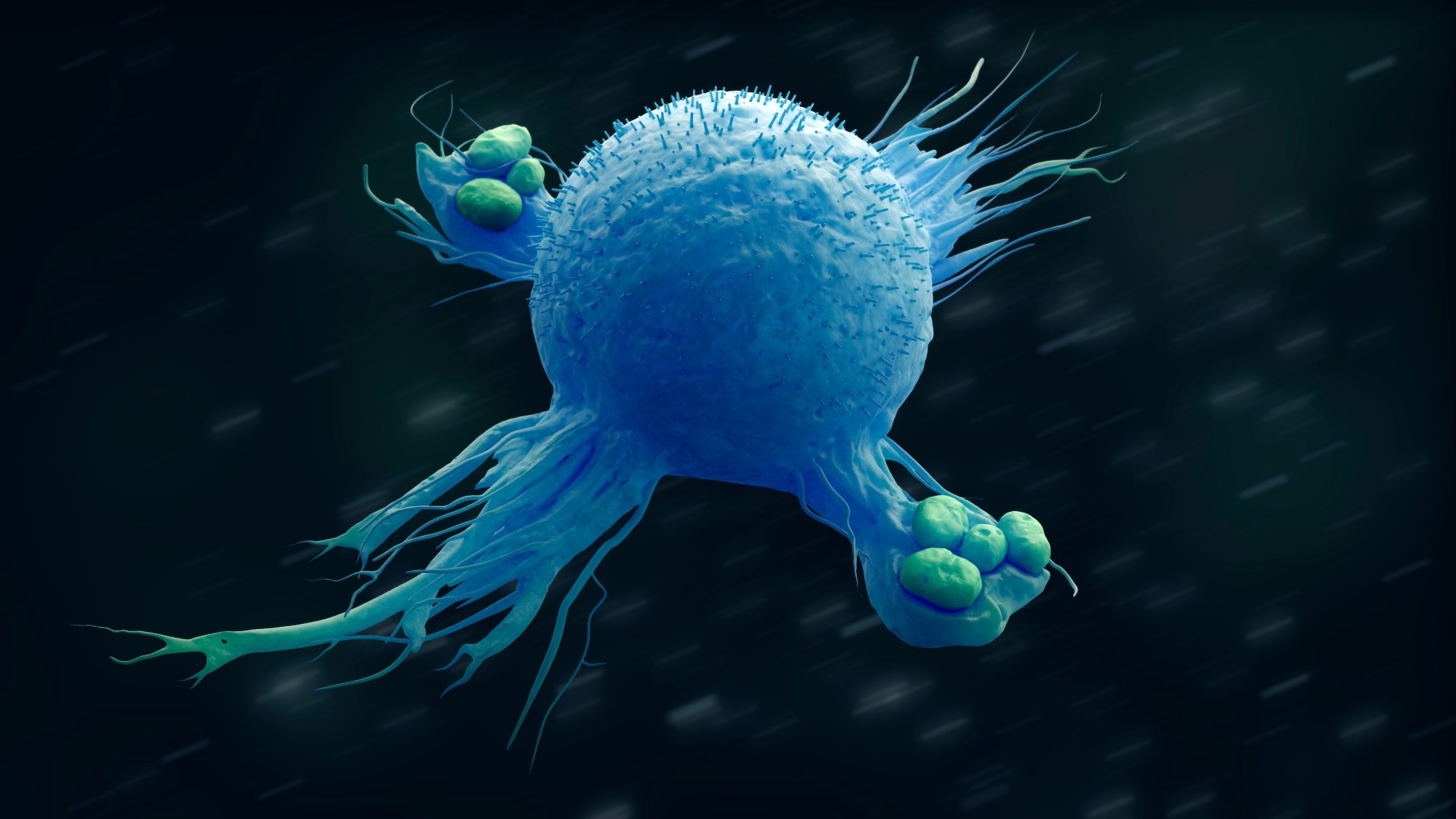In a recent study published in Cell, researchers examined the wealth of information available regarding the heterogeneity of tissue macrophages. They pursued a conceptual framework for better understanding the origins and functions of different macrophages while focusing on the interplay between macrophage differentiation amid steady-state and disease-associated signals, time, and their contribution to homeostasis or disease progression.
 Study: Macrophages in health and disease. Image Credit: urfin/Shutterstock
Study: Macrophages in health and disease. Image Credit: urfin/Shutterstock
Background
Macrophages, tissue sentinel cells present across various organs throughout the body, clean their surroundings by phagocytosing cellular material and regulating tissue repair and maintenance. However, monocyte-derived macrophages (mo-mac) and tissue-resident macrophages (RTMs), two macrophage subsets, differ during development, health, and disease.
The acquisition and application of the transcriptional programs that distinguish mo-macs from RTMs are crucial to understanding when and where ontogeny (i.e., developmental origin) matters. All three factors have a role to play in this—the availability of cytokines, the balance of homeostatic cues and disease-associated signals, and biological time. Further research is needed to uncover the order of acquisition of these programs and how their induction could further diversify the differentiation trajectory of monocytes into RTMs at the steady state and mo-macs during disease.
The study and its findings
In the present study, researchers summarized the unique core functionalities of RTMs in different tissues, various species of RTMs, and their tissue-specific activities. Further, they illustrated how they differ from the functional contributions of mo-macs to disease progression. Indeed, they observed that RTMs are gatekeepers of homeostasis.
In the hippocampus, in the kidney, and most frequently in the bone marrow, liver, and spleen, macrophages and Kupffer cells (KC) oversee the start and finish of the erythropoietic cycle, respectively. It is a classic example of how different RTMs clear cellular nuclei and debris during development and, subsequently, clear other immune cells.
Safeguarding the vital organs
Microglia, the major type of RTMs in the central nervous system (CNS), play an extensive role in managing neuronal health. For instance, microglia join the neurovascular unit (NVU) to modulate blood flow and nutrient supply to neurons and other glial cells. In addition, they phagocytose dying neurons. More importantly, this relationship is not strictly unidirectional; thus, CNS and PNS neurons promote macrophage survival by producing growth factors like interleukin-34 (IL-34).
Likewise, RTMs preserve vascular integrity. A classic example of the same is how the RTMs in the human heart, called perivascular and cardiac macrophages, locally self-renew and collaborate to help preserve cardiac function and vascular tone in peripheral tissues. They stimulate the angiogenesis and proliferation of cardiomyocytes. Further, they sustain the hearts' electrical conductivity and metabolic health by eliminating cardiac-derived exophers of junk mitochondria via the phagocytic receptor tyrosine protein-kinase (MerTK).
Skin and internal mucosal surfaces are the most vulnerable to breach by microbes, and RTMs combat pathogens here. For instance, alveolar macrophages that migrate along the air-liquid-air interface of the lungs capture and contain bacteria or virally infected cells in the presence of pro-differentiation factors, such as granulocyte-macrophage colony-stimulating factor (GM-CSF). They also avert pathogenic and systemic inflammation without compromising the innate immune response to infections, thus, deterring unnecessary tissue destruction.
Monocyte-derived RTMs also protect tissue homeostasis. Remarkably, the brain maintains the native pool of embryonically derived RTMs throughout a lifetime. Even in the heart, pancreas, or gut, the proportion of monocyte-derived RTMs increases with time. However, aging and shifts in the microbiome reduce their self-renewal capacity and ability to access and colonize newly forming niches. Thus, circulating monocytes from the vasculature differentiate to form new RTMs and maintain niche integrity depending on the biological time.
Macrophage ontogeny is more than just developmental origin
Cell ontogeny, embryonic or bone marrow-derived, is more than a notation of developmental origin, age, or tissue type. Studies have characterized the molecular programs used by ontogenically distinct macrophages and how they contribute to disease pathogenesis but with much less precision.
The time at which homeostatic differentiation becomes improbable and signals that drive non-homeostatic differentiation begins to overwhelm macrophage niches may determine the degree to which specific disease-associated molecular programs are engaged by mo-macs and affect disease course. Indeed, it is crucial to investigate cues that make mo-macs' pathogenic drivers of disease' in diseased tissues.
A suite of disease-associated signals, such as pro-inflammatory cytokines, alarmins, and damage-associated and pathogen-associated molecular patterns (DAMPs and PAMPs), recruit excess inflammatory monocytes into tissues. During severe and chronic disease, RTMs fail to withstand continuous inflammation, which leads to tissue barrier activation and death.
Conclusions
Precisely, when recruited mo-macs help repopulate RTMs during disease resolution are unclear. However, the broader collection of these mo-macs across various tissues certainly shapes multiple disease conditions. The onset of disease often instigates the death of RTMs and circulating monocytes creating vacant RTM niches. But unlike the macrophages that seed the tissue in its ontogeny, these mo-macs encounter a distinct milieu, reacting to inflammatory and disease-specific cues that skew their differentiation and prompt the expression of repertoires of molecular programs that further drive diseased states. Indeed, recruitment of mo-macs comes at a hefty price.
These observations emphasize the importance of refining the use of macrophage ontogeny and developmental pathways, taking into account the kinetics of monocyte recruitment and differentiation and how that affects their ability to revert to "unconventional" monocyte-derived RTMs upon disease resolution. Most importantly, develop an understanding of how niche-based education of embryonic or monocyte-derived RTMs, and the lack thereof for mo-macs harboring disease-afflicted niches, could be modulated to select for disease-resolving programs. Ultimately, it will be crucial to identify reliable markers that distinguish the subsets of RTMs and the disease-driven pool of mo-macs.
Identifying conserved mo-mac programs across disease states and multiple tissues might reveal candidate targets that may be ideal for therapeutic modulation. Examples include the Triggering Receptor Expressed On Myeloid Cells 2 (TREM2) program. To conclude, further descriptive profiling and functional studies are needed to use macrophage heterogeneity in health and disease.